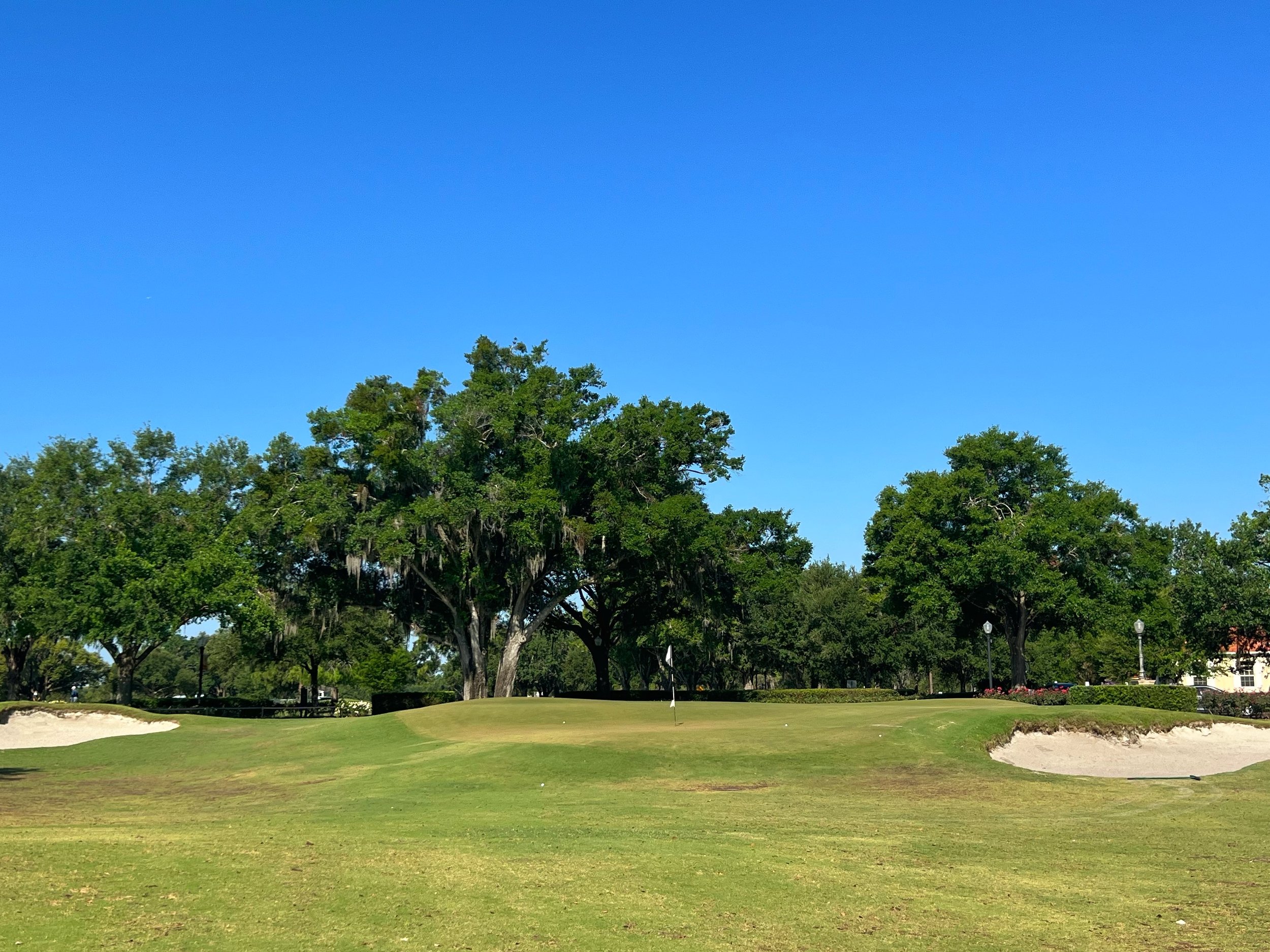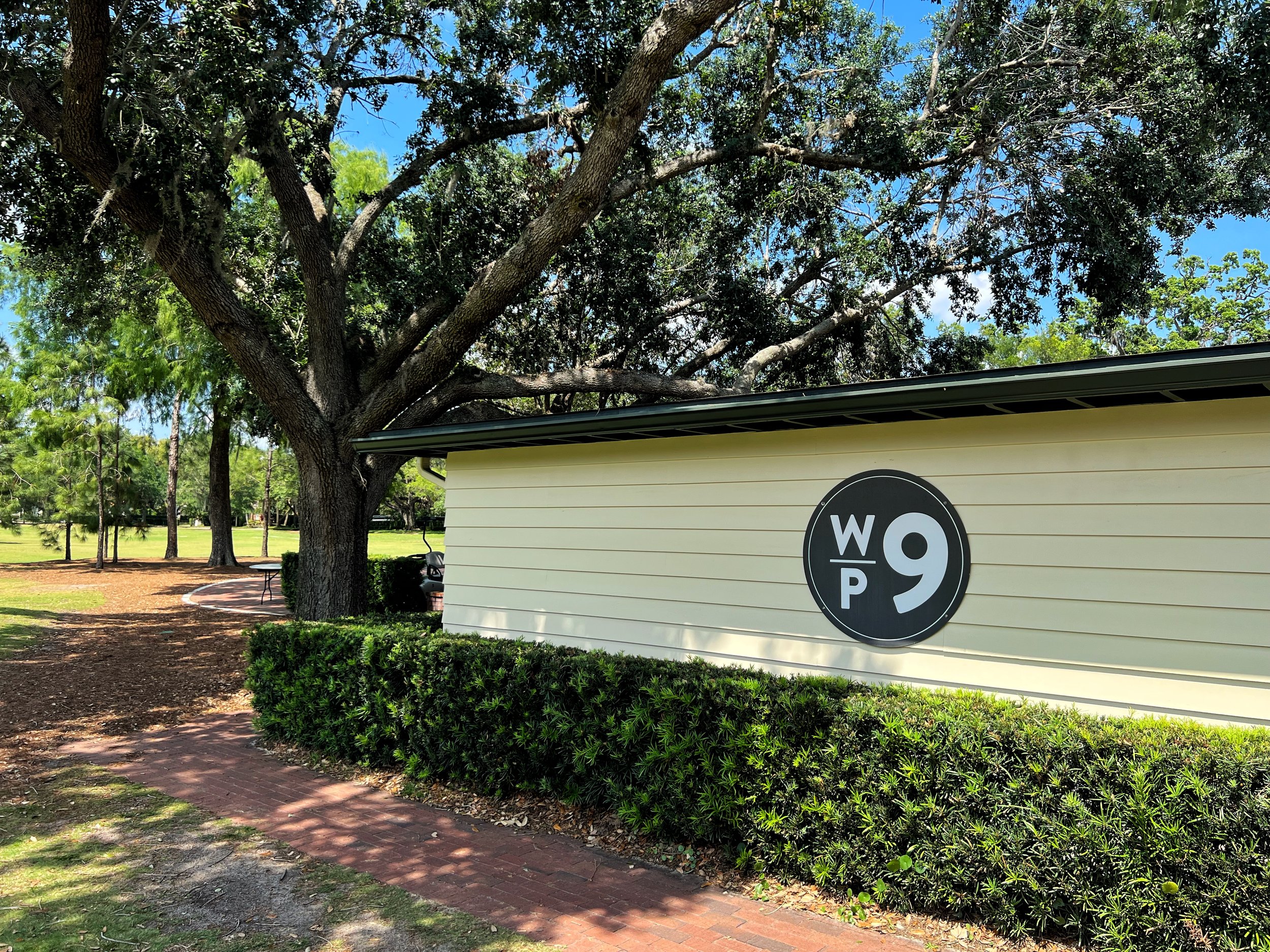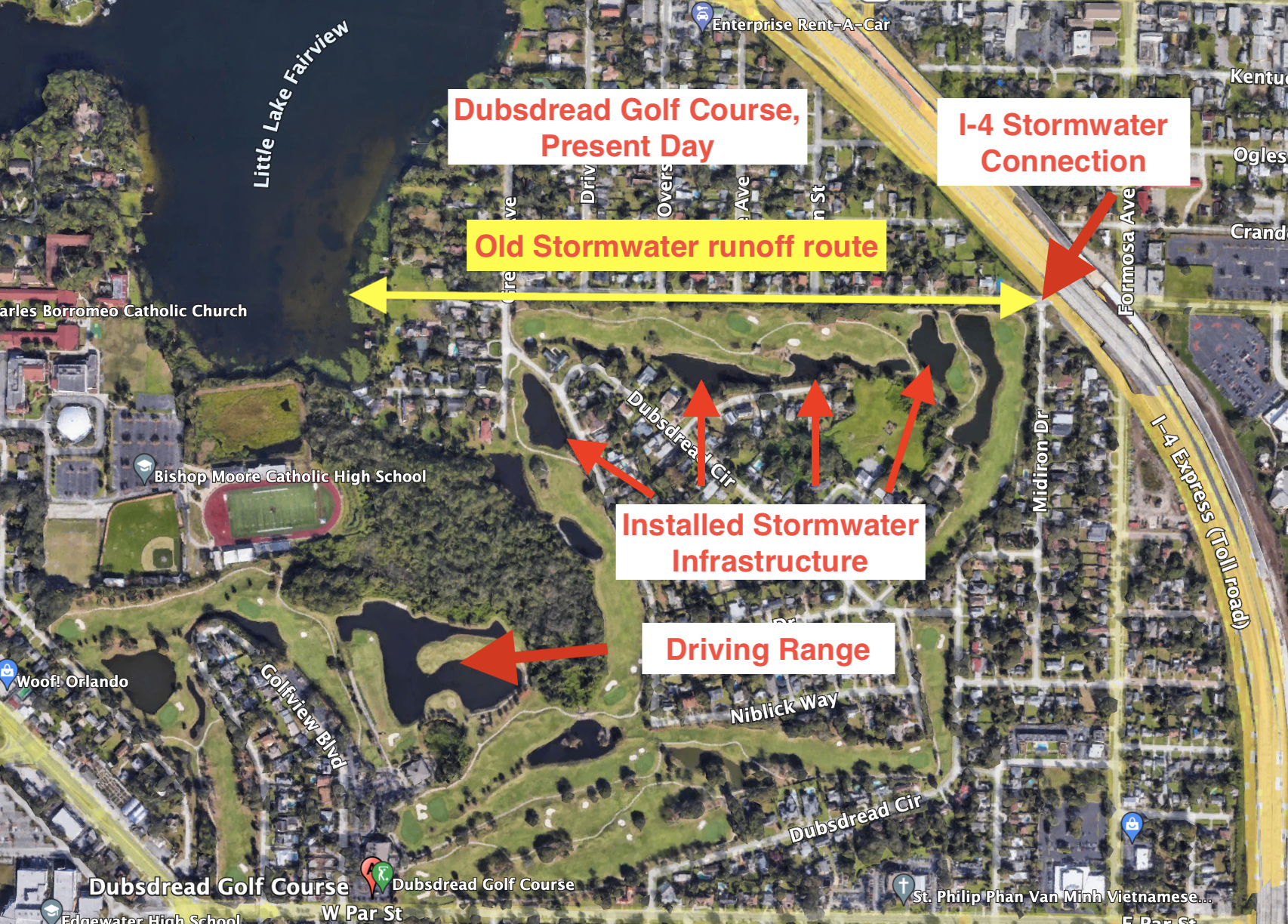Muni Golf Field Trip - Central Florida Edition
DTG co-founder Andre Paul crosses Crane Creek on the long, par 3 5th hole at Crane Creek Reserve Golf Course in Melbourne, FL
At the beginning of April, I traveled home to Central Florida to help my mom prepare for her pending shoulder replacement surgery (the surgery went very well by the way and her surgery was further proof that medical technology these days is absolutely amazing). She recruited a few other family members to help her with post-op recovery, kindly excusing me from sonly duties. So, I figured I would make the most of my trip home and initiate my very first Municipal Golf Field Trip - Central Florida style.
The goals of my field trip were simple yet very specific:
Reconnect with an old course I hadn’t played in over a decade to see how a low-budget renovation can transform a municipal golf course into an industry gem.
Network with a fellow municipal golf stakeholder and learn from his 20 years of experience
Meet a business partner in person for the first time at a muni neither of us had played before.
Stop #1 - Winter Park Golf Course, Winter Park, FL
A young couple wait for their turn to start their round at the Winter Park Golf Course.
Affectionately known as the WP9, the 9-hole Winter Park Golf Course opened in 1914 and is located in the heart of downtown Winter Park, an Orlando suburb located just northeast of the city. In 2016, the golf course reopened after a complete renovation that was initiated to help return the 100-year old course to its former glory and to ensure its success for generations to come. Prior to the renovations, conditions were awful. Any rain ensured that the 9th hole would become a giant pond and the greens were where grass went to die. The golf course staff did all they could with the resources at hand but sometimes all you can make in life is lemonade.
The WP9’s post renovation turnaround is widely regarded as one of municipal golf’s greatest success stories and is an exemplary case study on what can result when government officials, golf course operators and city residents come together to invest in public, urban green space. The mere fact that the entire golf course was renovated for less than $1.5 million and went from losing $150,000 annually to making $1 million in revenue in only 5 years post renovation is nothing less than miraculous.
Prior to this visit to WP9, the last time I played there was well over 15 years ago. I’m not the type of golfer that is able to remember every round of golf or golf course I’ve ever played so my memories of the WP9’s conditions at my last visit are a little foggy. However, I can assure you that what I encountered a few weeks ago didn’t exist in the mid 2000’s.
The golf course is so much fun to play. The layout is relatively the same from what I remember, a short par 35 golf course that winds through city streets (golfers must cross the street 5 times during a round) and around a beautiful cemetery filled with oak trees and magnolias draped in Spanish moss. What was the most striking difference between my two visits was the complexity of the new putting greens. Large, undulating and firm are the words I would use to describe the WP9’s greens and they provide the primary challenge for golfers of all skill levels.
I can assure you that no golf trip to Orlando would be complete without a trip to the WP9. For those of you interested in learning more about the renovations at WP9 and the stakeholders that brought it back to life, I encourage you to watch the WP 9 Episode of the National Links Trust Municipal Golf Network Webinar Series that I manage and co-produce. The panel features former Winter Park mayor Steve Leary, golf course architect Keith Rhebb, golf media personality Matt Ginella and current WP9 general manager Gregg Pascale.
Stop # 2 - Dubsdread Golf Course, Orlando, FL
Dubsdread Golf Course opened in 1924 and is located not far from the WP9, only a few miles as the crow flies. The goal of my visit to Dubsdread was to meet with General Manager Rodney Reifsnider. I was connected to Rodney by way of the Orlando Sustainability Office because the two organizations had been working together over the past several years to improve the golf course’s sustainability efforts. My visit to this course was not to play golf, something I still have yet to do there, but instead to build community and network with Rodney and learn about the sustainable infrastructure installed with the course’s renovation in 2008.
The renovation of Dubsdread began in 2006 and was the result of a partnership with the City of Orlando and the Florida Department of Transportation to build the stormwater infrastructure needed to divert and clean runoff routed from nearby Interstate 4, which sits about 50 yards from the golf course’s 4th green. Prior to the renovations, rain was funneled directly to nearby Little Lake Fairview but the amount of runoff was more than the lake could take in. So a plan was developed to connect I-4’s stormwater infrastructure to the golf course to alleviate flooding issues in the surrounding communities. Part of the redesign included converting the driving range from a field range into a water range with floating golf balls. The two Google Earth images below show the golf course before and after the renovations.
When executed well, this type of golf course infrastructure enhancement can completely revitalize a community and accentuate the value that municipal golf courses can provide for its stakeholders.
Stop # 3 - Crane Creek Reserve Golf Course, Melbourne, FL
Golfer practicing on the putting green next to Crane Creek Reserve’s 1st Hole.
Melbourne, Florida is a coastal city about 70 miles southeast of Orlando and the trip to Crane Creek Reserve was my final golf course visit for the week. My trip to this course is significant only for the fact that I finally met fellow Driving the Green co-founder Andre Paul in person for the first time. Melbourne served as the perfect host to meet Andre because it was roughly halfway between his home in Jupiter, FL and where I was staying in NW Orlando. Melbourne also happened to be where Andre was planning to spend his Easter holiday with family.
Crane Creek Reserve, formerly known as Melbourne Municipal Golf Course, opened in 1928 and was renovated 50 years later with a new clubhouse and several new golf holes. I did not arrange any meetings for this field trip and in depth historical background on the course is not readily available or just doesn’t exist. So with this in mind I decided to enter into my visit to the course with a fresh mind and clear eyes to take in all that it has to offer Melbourne’s golfing community.
The course was a lot of fun to play and Andre and I had a great time walking the golf course together. At only 5,900 yards from the back tees, the par 71 course provides a nice and easy stroll through fairways guarded by water, palm trees and thick, no-mow areas ready to gobble up errant shots. Typical of most coastal golf courses, the wind must be also accounted for on nearly every shot. Golfers of all types and abilities filled the fairways and the driving range and it was evident that this is a place designed for everyone.
As Andre and I meandered the fairways our conversations floated between pondering life’s mysteries (as we typically do) to the possibilities that Crane Creek held for providing added value to its stakeholder community. Because the course was fairly tight without much space in between holes, we determined it didn’t make sense for Crane Creek to focus on alternative land uses in those non-playable areas, save for the addition of pollinator meadows and native/naturalized areas that could support the local and migratory wildlife.
This picture shows the current status of the no-mow/unplayable areas between holes on the back 9 at Crane Creek Reserve. We felt there was real potential to incorporate native plantings in areas like these to bring depth and aesthetic to the golf course while providing local wildlife with ecological services.
One aspect the course could focus on is the status of the vegetative buffer lining Crane Creek, the course’s namesake body of water that cuts through the heart of the front 9 holes (the picture at the top shows Andre crossing Crane Creek). The banks of the creek were heavily vegetated and I’d be interested to learn how much of it was native versus invasive and what could be done to improve the course's ability to filter and clean stormwater runoff before entering this waterway.
A rain shelter located on Crane Creek Reserve, a spot fitting for a foursome.
Driving the Green Takeaway:
After completing my first muni golf field trip I’m left with inspiration and motivation to continue researching and investing my time in municipal golf. It is a form of golf that holds so much potential to change lives and enhance communities and their residents. If you haven’t visited your local muni recently, please do. Yes, the conditions are not always great. Sure, the pace of play is bound to be on the slower side. And yes, you absolutely should expect to play with someone you’ve never met before. But isn’t that the beauty of life? Accepting things as they are, for better or worse. Living in the moment and learning to appreciate what life has to offer. Meeting and greeting new people with the same curiosity and fervor you would a friend not seen in ages. Golf can teach us many things in life and if all I ever learn from playing municipal golf are these simple takeaways, then consider me a happy and fulfilled man. Now, what to do about making more birdies?










